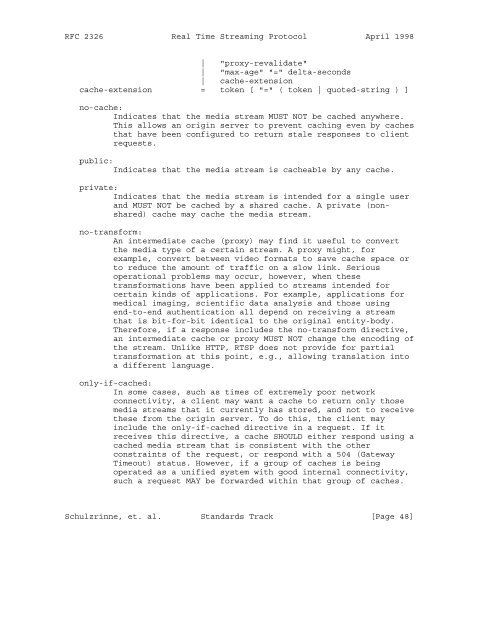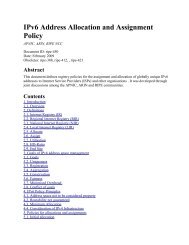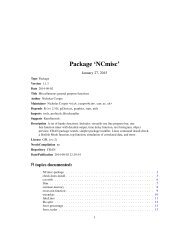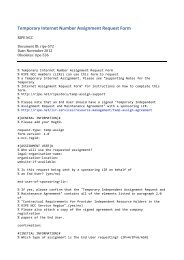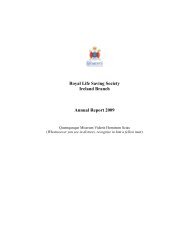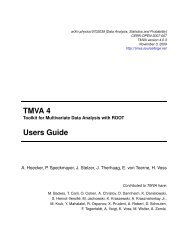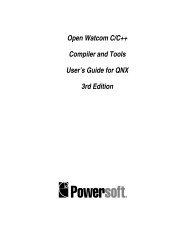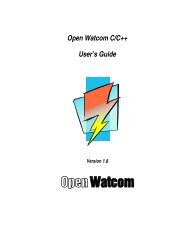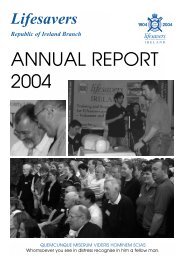Standards Track A. Rao Netscap - RFC Editor
Standards Track A. Rao Netscap - RFC Editor
Standards Track A. Rao Netscap - RFC Editor
Create successful ePaper yourself
Turn your PDF publications into a flip-book with our unique Google optimized e-Paper software.
<strong>RFC</strong> 2326 Real Time Streaming Protocol April 1998| "proxy-revalidate"| "max-age" "=" delta-seconds| cache-extensioncache-extension = token [ "=" ( token | quoted-string ) ]no-cache:Indicates that the media stream MUST NOT be cached anywhere.This allows an origin server to prevent caching even by cachesthat have been configured to return stale responses to clientrequests.public:Indicates that the media stream is cacheable by any cache.private:Indicates that the media stream is intended for a single userand MUST NOT be cached by a shared cache. A private (nonshared)cache may cache the media stream.no-transform:An intermediate cache (proxy) may find it useful to convertthe media type of a certain stream. A proxy might, forexample, convert between video formats to save cache space orto reduce the amount of traffic on a slow link. Seriousoperational problems may occur, however, when thesetransformations have been applied to streams intended forcertain kinds of applications. For example, applications formedical imaging, scientific data analysis and those usingend-to-end authentication all depend on receiving a streamthat is bit-for-bit identical to the original entity-body.Therefore, if a response includes the no-transform directive,an intermediate cache or proxy MUST NOT change the encoding ofthe stream. Unlike HTTP, RTSP does not provide for partialtransformation at this point, e.g., allowing translation intoa different language.only-if-cached:In some cases, such as times of extremely poor networkconnectivity, a client may want a cache to return only thosemedia streams that it currently has stored, and not to receivethese from the origin server. To do this, the client mayinclude the only-if-cached directive in a request. If itreceives this directive, a cache SHOULD either respond using acached media stream that is consistent with the otherconstraints of the request, or respond with a 504 (GatewayTimeout) status. However, if a group of caches is beingoperated as a unified system with good internal connectivity,such a request MAY be forwarded within that group of caches.Schulzrinne, et. al. <strong>Standards</strong> <strong>Track</strong> [Page 48]


